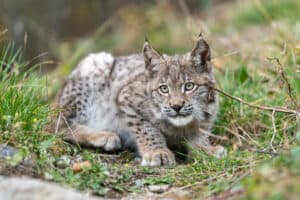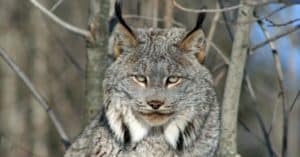Lynxes are intriguing mammals that are somewhat hard to find. They are ambush predators, after all. Still, some species face dwindling populations and habitat loss, making the wild cats rarer than they were in the past. What if you wanted to see a lynx up close, though? Where do lynx live, and where could you find them?
Those are the questions we’re going to tackle in this article. As a warning, you should not try to find these animals and encroach upon them. While the chances of a lynx attack on a human are low, it’s not worth the potential harm to you or the cat to get near it.
Furthermore, some species of these animals are considered endangered and protected by the law. Some interactions with them may be considered illegal.
What to Know Before Trying to See Where Lynx Live
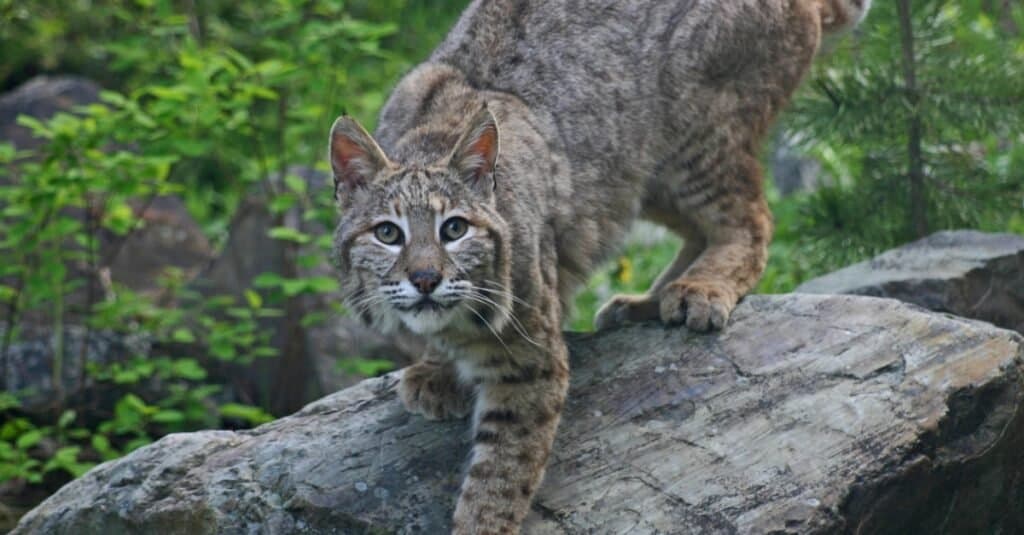
The
bobcat
is the smallest type of lynx cat breed.
©iStock.com/Anita Elder Design
Generally, a human can encounter a lynx in the wild, and they can encounter them in captivity. Observing the lynx in captivity is the better option for a few reasons.
For starters, lynx are wild animals that stay hidden much of the time. They will usually try to avoid humans. In short, finding lynx in the wild can be difficult. Also, one has to consider safety when looking at where lynx live. For the most part, lynxes want to be left alone. If a person encroaches on them, they could lash out to protect themselves. It’s still much more likely that they will run away.
Meanwhile, captive lynxes are much easier to see and appreciate in zoos around the world. Now knowing the best way to see them, let’s consider where lynx live and how to find them.
Where Does Each Species of Lynx Live in the Wild?
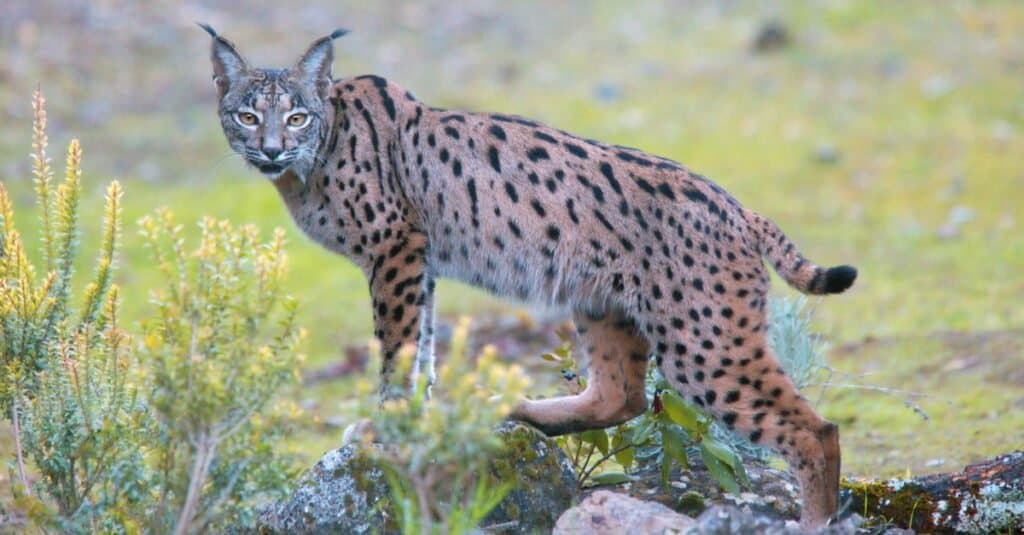
Iberian Lynx among the rocks in Sierra Morena, Andalucia, Spain.
©tony mills/Shutterstock.com
Four different species of lynx live in the world today. Each of them inhabits a certain range, and some of their ranges overlap. Take a look at each species and see where they’re found in the world along with the habitats where they’re most likely to be discovered.
Iberian Lynx
The Iberian lynx is an endangered species that lives in Europe. They are the most endangered felines, and they currently have the highest chance of going extinct of any feline. As their name suggests, these creatures are found on the Iberian Peninsula. This peninsula is made up of Spain, Portugal, and the southernmost portion of France.
Roughly 404 of these cats remain in the wild today, up from 100 of them in 2002. They have a small population in Andalusia, but conservation efforts could aid in a resurgence of these cats.
These wild cats weigh about 15 to 35 pounds, and they only reach lengths of slightly less than 3 feet long including their tails. These animals are not very large, and they are skittish around humans.
Eurasian Lynx
The Eurasian lynx is the largest species, and they also have the greatest range of them all. These cats can measure upwards of 4.3 feet long, stand 2.5 feet high, and weigh over 60 pounds at their largest size.
As the animal’s name suggests, the Eurasian lynx has sporadic populations throughout Western Europe and large populations in Northern Europe, Eastern Europe, and Asia, especially western China.
About 50,000 of these creatures exist in the wild today. That means there is a higher chance that people could find these cats in the wild. That being said, they stay away from people when they can. They primarily live in forests, using rocks, fallen trees, and other types of cover to stay out of sight.
Canada Lynx
The Canada lynx is not as large as the Eurasian lynx. This species only grows about 3 feet long, weighs between 18 and 31 pounds, and stands between 1.5 and 2 feet tall.
These cats live from the westernmost reaches of Alaska all the way to the east coast of Canada with some small exceptions. Also, some of them live in the contiguous United States, including Maine, Washington, Montana, Idaho, and western Colorado.
They tend to live in various boreal forests throughout their range, using their extra-wide paws to help them traverse deep snow in pursuit of hares and other prey. Finding them is a matter of being in those areas, both remote and near human settlements. However, the species suffers from dwindling prey in some areas as well as fatal interactions with human beings in the form of hunting and car strikes.
Bobcat (Red Lynx)
The bobcat is generally accepted as the smallest lynx species. They weigh between 16 and 30 pounds, grow about 2.4 to 3.3 feet in total length, and stand between 1.5 to 2 feet in total height.
This species is not endangered, so they have high numbers. They are seen with a relatively high frequency near human rural and suburban areas. A bobcat’s range includes most of Mexico, all the contiguous United States, and the bottom third of Canada.
These lynxes live in forests, deserts, scrublands, and coastal swamp regions throughout their large range.
How to Find a Wild Lynx
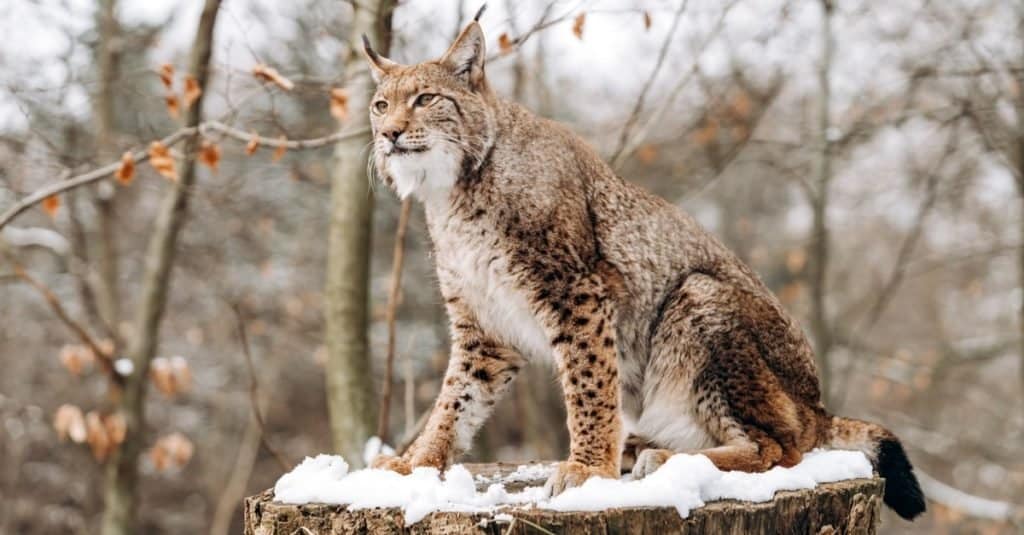
The best and easiest way to see a lynx is by going to a zoo.
©Ewa Studio/Shutterstock.com
Again, your best bet to find where lynx live is to see them in a zoo. However, it’s possible to track them by taking some tips from hunters.
The first step involves being in the right place. Find areas where they’ve been spotted or places where they probably live. Boreal forests are a good place to look for most lynx.
Next, it’s time to attract them. Some people play the sounds of lynx prey, like hares or birds, to lure the creatures to the area. Other hunters utilize decoy animals scented with the odor of real animals, like beaver, to draw the creatures to an opportune area.
People that trap and tag these mammals also use scented mirrors in areas where lynxes have been spotted to pique their interest. These methods are useful to people trying to take pictures of these creatures as well as conservationists attempting to tag them.
Knowing where lynx live and how to find them in the wild is probably not the easiest or safest way to see one. Instead, the better choice would be to go to where they are kept in captivity. Consult local zoos to find one that houses a lynx.
The photo featured at the top of this post is © iStock.com/Kyslynskyy
Thank you for reading! Have some feedback for us? Contact the AZ Animals editorial team.



